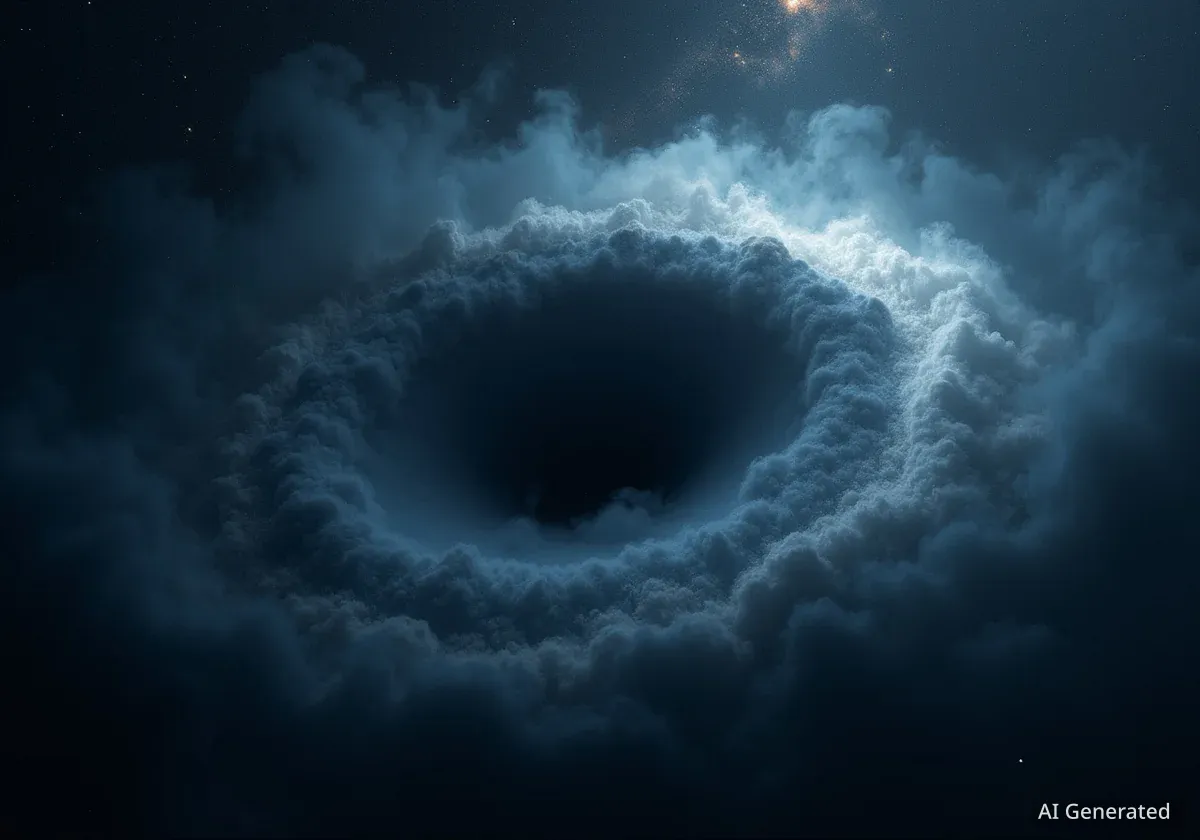In 2019, gravitational wave observatories detected a powerful, mysterious signal from deep space. While the prevailing theory points to the merger of two massive black holes, a new paper from researchers at the Chinese Academy of Sciences proposes a more extraordinary explanation: the signal may be an echo from a cosmic event in a parallel universe.
The event, known as GW190521, was recorded by the LIGO and Virgo observatories. The new hypothesis suggests the signal traveled to our universe through a temporary wormhole, challenging conventional understanding of cosmic phenomena.
Key Takeaways
- Researchers propose the 2019 gravitational wave signal GW190521 originated in a parallel universe.
- The theory suggests the signal traveled through a temporary wormhole created by a black hole merger.
- The signal's unusually short duration is a key anomaly that standard models struggle to explain.
- A new model simulating a wormhole echo provides a slightly better fit for the data, but the research is pending peer review.
The Mystery of GW190521
On May 21, 2019, scientific instruments detected a brief but intense burst of gravitational waves. These ripples in spacetime are typically caused by cataclysmic events, such as the collision of black holes or neutron stars. The scientific community largely concluded that GW190521 was the result of two supermassive black holes merging.
However, the signal had peculiar characteristics that did not perfectly align with standard models. This discrepancy has prompted some scientists to explore alternative, more exotic explanations for its origin.
Anomalous Signal Characteristics
The most significant anomaly of GW190521 was its extreme brevity. When two black holes spiral toward each other, they are expected to emit a gradually intensifying signal known as a "chirp." This characteristic sound, which increases in frequency and amplitude, provides a clear signature of the merger process.
According to observations, the GW190521 signal was almost entirely missing this preliminary phase. For an event involving an estimated 142 solar masses, the absence of a detailed chirp is difficult to account for under the standard black hole merger model. This has led researchers to question whether the signal was generated by a conventional cosmic collision within our own universe.
What are Gravitational Waves?
Gravitational waves are ripples in the fabric of spacetime, predicted by Albert Einstein's theory of general relativity. They are created by some of the most violent and energetic processes in the universe, such as colliding black holes or exploding stars. Detecting them allows scientists to observe cosmic events that are invisible to traditional telescopes.
A Parallel Universe Hypothesis
In a paper that has not yet undergone peer review, a team from the Chinese Academy of Sciences has put forward a bold new theory. They propose that GW190521 was not a direct observation of a black hole merger but rather an echo of one that occurred in a parallel universe.
This hypothesis centers on the concept of a wormhole, a theoretical passage through spacetime that could potentially connect different points in space and time, or even separate universes.
"We witnessed not just a cosmic cataclysm, but the echo of a collision between black holes in a parallel Universe," the researchers suggest in their conceptual framework.
The Wormhole Echo Model
To test their idea, the scientists developed a sophisticated model. This model simulates what a gravitational wave signal would look like if it originated from merging black holes in another universe and then traveled through a rapidly collapsing wormhole into ours.
The calculations from this model produced a waveform that closely matches the unusual, short-duration structure of GW190521. The reflection from the collapsing wormhole could explain why the typical "chirp" phase was absent. In this scenario, detectors on Earth would have picked up only a distorted fragment of the original event.
Peer Review and Scientific Scrutiny
It is important to note that this hypothesis is still in its early stages. The research paper must undergo a rigorous peer-review process, where other independent scientists will evaluate its methods, data, and conclusions. This is a standard and essential part of the scientific process to ensure the validity of new findings.
Implications and Future Research
While the parallel universe theory is compelling, the researchers acknowledge that their model offers only a marginally better fit to the existing data than traditional explanations. This leaves significant room for debate and further investigation within the scientific community. The standard model of a binary black hole merger remains the most widely accepted explanation for GW190521.
However, this new research opens up fascinating possibilities and encourages scientists to think beyond conventional frameworks when analyzing anomalous cosmic signals. It highlights how much is still unknown about the fundamental nature of the universe.
Searching for More Evidence
The story may not end with GW190521. A more recent event from 2023, which represents the most massive black hole merger detected since 2019, reportedly exhibits similar short-term signal characteristics. Scientists will likely scrutinize the data from this new event to see if it supports or contradicts the wormhole echo hypothesis.
If more signals with these unusual properties are discovered, it could lend weight to the idea that we are detecting phenomena from beyond our own cosmic horizon. For now, the origin of GW190521 remains one of the most intriguing puzzles in modern astrophysics, pushing the boundaries of what we believe is possible.





